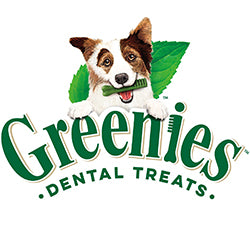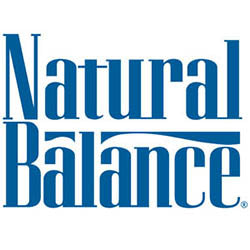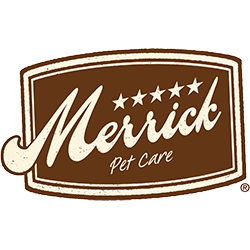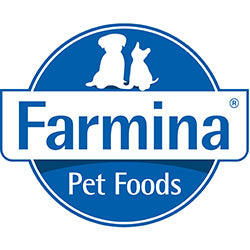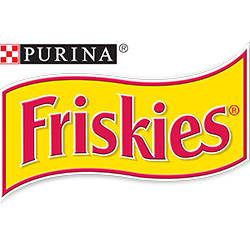
Understanding pet dental problems and how to prevent them
When we think of pets, the immediate concerns that come to mind often revolve around feeding them correctly, making sure they get enough exercise, and taking them to the vet for vaccinations. However, an equally important aspect of pet health that often goes unnoticed is dental health.
The importance of dental health in pets' overall health and longevity cannot be overstated, and overlooking it can precipitate grave health complications. The goal of this blog is to spotlight the vital role dental health plays in pets' lives, debunk prevalent myths about pet dental health, share revealing statistics, and offer an overview of central topics to be elaborated on in succeeding blog posts.
Importance of Dental Health in Pets
The mouth is a gateway to the rest of the body, and oral health can significantly impact a pet's general health. Just like in humans, poor dental health in pets can lead to a wide variety of health complications, including periodontal disease, infections that may spread to other parts of the body, and even heart disease. Pet owners must understand that maintaining their pets' dental health goes beyond ensuring they have fresh breath or white teeth - it is a vital aspect of their overall well-being.
Common Misconceptions about Pet Dental Health
Many pet owners often underestimate the significance of pet dental health. A common misconception is that if a pet is eating normally, then its dental health must be in good shape. However, this is not always true. Pets, especially dogs and cats, are good at hiding pain. They might continue to eat despite having dental problems.
Another common fallacy is the belief that dry food alone can clean a pet's teeth effectively. While dry food may reduce plaque to some extent, it does not replace the need for regular dental check-ups and cleanings.
Some pet owners also assume that dental disease is unavoidable and a natural part of aging. But with proper dental care, many pets can maintain healthy teeth and gums.
Statistics on Dental Health Issues in Pets
Dental diseases are surprisingly prevalent among pets. American Veterinary Medical Association (AVMA) says, by the age of three, most dogs and cats have some evidence of periodontal disease. Moreover, a report from Banfield Pet Hospital indicated that dental conditions were the most common health issue among pets in 2021, with 68% of cats and 76% of dogs showing signs of dental disease by the age of three.
Despite these alarming figures, pet dental health often remains overlooked. American Pet Products Association (APPA) study revealed that only 1 in 3 pet owners provide their pets with the dental care recommended by veterinarians.
Key Topics to be Discussed
Understanding the importance of pet dental health is just the first step. The subsequent blogs will delve deeper into various facets of pet dental health. We will explore the signs of dental diseases in pets and how you, as a pet owner, can identify them early on. Additionally, we will discuss preventive measures such as regular brushing, dental toys, dental diets, and professional cleanings. We will also go through some of the treatment options available for pets suffering from dental diseases. The ultimate goal is to have pet owners with the knowledge and tools to ensure their pets' dental health is never compromised.
In conclusion, dental health is a significant facet of your pet's overall health, one that warrants as much attention as other aspects of their care. As a pet owner, embracing the responsibility of your pet's dental health is a vital step towards ensuring their longer, healthier, and happier life. Stay tuned to gain a deeper understanding of pet dental health.
Detailed Overview of Pet Dental Problems
Just like us humans, pets also experience a variety of dental problems, each with their unique causes, symptoms, potential complications, and predisposed breeds. In this article, we will dive into the specifics of four major dental issues that pets may encounter: periodontal disease, broken teeth, oral tumors, and feline tooth resorption.
Detailed Overview of Pet Dental Problems
Periodontal Disease
Periodontal disease, is a widespread dental issue in pets, particularly in dogs and cats. It's an inflammation of the tissue surrounding the teeth caused by bacterial plaque build-up. Over time, the bacteria can lead to gum inflammation (gingivitis) and progress to affect the supporting tissues, eventually leading to tooth loss.
Symptoms include bad breath, difficulty eating, excessive drooling, gum recession, and loose teeth. If you dont treat it, it can lead to systemic complications like heart and kidney disease. Breeds like Poodles, Yorkshire Terriers, and Dachshunds are more susceptible due to their small mouths that crowd the teeth together, promoting plaque accumulation.
Case Study: A nine-year-old Poodle named "Max" was brought to a vet with loss of appetite and bad breath. Upon examination, the vet discovered severe periodontal disease that required multiple tooth extractions and a deep cleaning. After treatment, Max's appetite improved, and his bad breath disappeared.
Broken Teeth
Broken or fractured teeth are common in pets, often resulting from chewing on hard objects or due to trauma. Broken teeth can expose the pulp, causing pain and leading to infection or abscess.
Symptoms include chewing on one side of the mouth, swelling around the mouth, and sometimes changes in behavior due to pain. Breeds predisposed to this issue are those who are enthusiastic chewers, like Labrador Retrievers and Pit Bull Terriers.
Case Study: "Bella," a two-year-old Labrador Retriever, was presented to a vet with a visibly fractured tooth caused by chewing on a hard bone. The tooth was extracted, and Bella was advised to avoid hard chew toys in the future.
Oral Tumors
Oral tumors can occur in any part of a pet's mouth and vary from benign growths to malignant cancers. While the exact cause is unknown, factors like second-hand smoke, chronic inflammation, and viral infections may play a role.
Signs include swelling, bleeding from the mouth, bad breath, difficulty eating, or noticeable mass. Certain breeds are more susceptible, including Boxers and German Shepherds.
Case Study: A ten-year-old German Shepherd named "Rex" had a persistent swelling on his lower gum. A biopsy confirmed it to be a malignant oral tumor. Rex underwent surgery to remove the tumor and is currently undergoing follow-up care.
Feline Tooth Resorption
Tooth resorption, commonly seen in cats, is a condition where the tooth structure breaks down and gets absorbed back into the body. The exact cause is unknown, but it's thought that inflammation plays a role.
Symptoms include difficulty eating, drooling, and oral bleeding. Tooth resorption can affect cats of any breed or age, but it's more common in older cats.
Case Study: A seven-year-old domestic shorthair cat named "Molly" was brought to the vet for decreased appetite. On dental examination, multiple teeth showed signs of resorption, causing discomfort while eating. Molly had the affected teeth extracted, and her comfort improved significantly.
To conclude, pet dental health is a multi-faceted field that requires attention to ensure the overall well-being of your beloved companions. Being informed about the potential dental problems that your pets might face is the first step in preventative care. In the subsequent articles, we will discuss the ways to prevent these issues and ensure that your pet's pearly whites stay healthy throughout their life.
Prevention of Pet Dental Problems
Ensuring a pet's dental health requires consistent preventive care. From regular check-ups and proper teeth brushing to using dental treats and maintaining a proper diet, there are various strategies pet owners can employ to stave off dental problems. Furthermore, professional cleanings play a significant role in maintaining optimal dental health. This article will delve into these strategies, explore new advances in preventive care, and debunk common myths.
Regular Check-ups
Just as with humans, routine dental check-ups are crucial for pets. These should ideally be conducted annually or more frequently for pets with a history of dental issues. Veterinarians can spot early signs of dental disease during these check-ups and recommend appropriate preventive or treatment plans.
Proper Teeth Brushing Techniques
Brushing your pet's teeth might seem daunting, but it's an effective preventive measure against dental disease. It's recommended to brush your pet's teeth daily or at least several times a week.
For dogs, use a dog-specific toothpaste (never human toothpaste) and a soft-bristled toothbrush. Start by gently lifting their lips, then brush in a circular motion, focusing on the gum line and the outside surfaces of the teeth.
For cats, the process is similar, but use a smaller toothbrush or a finger brush designed for feline use. Some cats might resist tooth brushing, so it's crucial to introduce this practice gradually and positively.
The Role of Dental Treats and Toys
Dental treats and toys can contribute to dental health by mechanically scraping off the plaque from your pet's teeth. However, these should complement, not replace, regular brushing. Always ensure that dental toys are safe and appropriately sized for your pet to prevent choking or broken teeth.
The Impact of Diet on Dental Health
A well balanced diet is essential for overall health, including dental health. Some diets are specifically designed to promote oral health by reducing plaque and tartar buildup. Talk to your vet to choose the best diet for your pet's needs.
Professional Dental Cleanings
Professional dental cleanings are necessary to remove tartar build-up that can't be eliminated by brushing alone. The process involves a thorough oral examination, scaling (to remove tartar above and below the gum line), polishing, and applying a preventive sealant. These cleanings require general anesthesia to ensure the pet's comfort and the procedure's efficacy.
Advances in Preventive Care
Advancements in pet dental health include the development of plaque-disclosing agents, which stain plaque to make it visible, helping owners target problem areas when brushing. Additionally, oral gels and water additives containing enzymes to fight plaque are also gaining popularity. However, it's essential to consult with a veterinarian before introducing new products to your pet's dental care regimen.
Debunking Common Myths
Myth: "Pets don't need dental care." Fact: Pets are prone to the same dental problems as humans and need regular dental care.
Myth: "If my pet had a dental problem, they would stop eating." Fact: Pets are adept at hiding pain and may continue eating despite dental issues.
Myth: "Dental health problems are only a concern for older pets." Fact: Dental problems can affect pets at any age, and preventive care should start when they are young.
In conclusion, preventative dental care is the cornerstone of ensuring a healthy, happy life for your pet. By integrating routine dental check-ups, regular brushing, using dental treats and toys, providing a balanced diet, and scheduling professional cleanings into your pet's care routine, you can lower the risk of dental diseases. Being aware of and debunking common dental health myths is also crucial in maintaining your pet's oral health. In the forthcoming sections, we will further discuss the treatment options available for various pet dental problems, helping you ensure the best possible care for your furry friend.
Spotting Dental Problems in Pets
Pet owners play a crucial role in identifying early signs of dental problems in their beloved companions. Recognizing changes in eating habits, understanding behavioral shifts, and conducting basic dental checks at home are vital steps in identifying dental issues. Knowing when to seek a doctor for help can also ensure timely and effective treatment. This article aims to guide pet owners in spotting dental problems early on, thus improving their pet's oral health and overall wellbeing.
Recognizing Signs of Dental Problems
The first step towards identifying dental issues is understanding the common signs associated with them. These include:
Bad breath: The first signs of dental disease is persistent bad breath. While occasional bad breath can be normal, chronic foul smell could indicate a serious dental problem.
Changes in eating and chewing habits: If your pet is eating less, showing difficulty in chewing, or dropping food from its mouth, it could indicate oral pain.
Excessive drooling: While some pets naturally drool more than others, sudden changes in drooling patterns can be a sign of oral discomfort or disease.
Swelling around the mouth: Swelling or lumps around the mouth, face, or under the eyes can indicate dental abscesses, tumors, or severe periodontal disease.
Bleeding from the mouth: Bleeding, especially when combined with loss of appetite or changes in behavior, can signify serious dental issues.
Behavioral Changes
Changes in your pet's behavior can also indicate dental problems. These may include:
Reduced activity or lethargy: Dental pain can reduce your pet's energy levels, making them less enthusiastic about activities they usually enjoy.
Irritability or aggression: Pets suffering from dental pain may become irritable or show uncharacteristic aggression, especially when their mouth or face is touched.
Pawing at the mouth or face: Pets often use their paws to indicate discomfort. If your pet frequently paws at its face or mouth, it could suggest a dental problem.
Performing a Basic Dental Check at Home
While professional check-ups are crucial, you can also perform a basic dental check at home to monitor your pet's oral health:
Ensure your pet is calm and comfortable. You may need a second person to help hold your pet.
Gently lift your pet's lips to expose their teeth and gums.
Look for signs of plaque or tartar (brownish deposits), red or swollen gums, bleeding, bad breath, broken teeth, or any lumps or masses.
Check if your pet shows signs of discomfort or pain during the examination.
Remember, this check does not replace professional examinations. It's simply a way to monitor your pet's oral health between vet visits.
When to Seek Veterinary Help
It's essential to seek professional help if you notice any of the signs discussed above. Additionally, regular veterinary check-ups can help identify problems before they become serious. Most veterinarians recommend annual dental check-ups, but more frequent visits might be necessary for pets with a history of dental issues.
In conclusion, recognizing dental problems in pets early on is vital to ensuring their overall health and quality of life. By becoming familiar with the signs of dental problems, understanding behavioral changes, conducting basic dental checks at home, and seeking timely veterinary help, pet owners can actively contribute to maintaining their pet's oral health. The forthcoming blog posts will further guide you on how to handle dental emergencies, treatment options for dental diseases, and strategies to help your pets cope with dental procedures, ensuring you are fully equipped to manage your pet's dental health.
The Link Between Dental Health and your Pets Overall Health.
When it comes to the health of your pets, oral hygiene plays a much larger role than you might realize. The condition of a pet's mouth can significantly affect its overall health, with poor dental health potentially leading to systemic diseases like heart, liver, and kidney conditions. In this comprehensive guide, we'll delve into the strong link between dental and overall health in pets, using expert opinions, research findings, and practical tips to illuminate this critical aspect of pet healthcare.
The Direct Impact of Dental Health
Poor dental health begins with the build-up of bacteria in the mouth, leading to tartar and plaque. This can subsequently lead to gingivitis (gum inflammation) and periodontal disease. If it is untreated, bacteria can enter the bloodstream, impacting various bodily systems and organs, leading to significant health problems.
Cardiovascular Implications
Dr. Mike Paul, a renowned veterinary consultant, explains the link between heart di dental health and heart disease in pets: "Oral bacteria can easily enter the bloodstream and reach the heart, adhering to the valves and causing endocarditis (inflammation of the inner heart lining). This can impair the heart's functioning and is a serious, potentially life-threatening condition."
Impact on Liver and Kidney Health
Oral bacteria can also affect other organs like the liver and kidneys. "Bacteria from the mouth can be filtered out by the liver and kidneys, leading to inflammation and infection, potentially causing severe organ damage," says Dr. Jan Bellows, a diplomate of the college of the American Veterinary Dental.
A research article published in Veterinary Research Communications (2009) indicated a correlation between periodontal disease in dogs and changes in biochemical markers for kidney and liver function, underscoring the systemic implications of poor oral health.
Tips for Maintaining Overall Health through Dental Care
Given the profound influence of dental health on overall well-being, maintaining your pet's oral hygiene should be a top priority. Here are some practical tips:
Regular Check-ups: Schedule routine dental check-ups with your vet. They can spot early signs of dental disease and initiate appropriate preventive measures or treatments.
Home Dental Care: Brush your pet's teeth daily using a pet-specific toothbrush and toothpaste. Introduce this gradually and make the experience positive for your pet.
Healthy Diet and Chews: A balanced diet and dental chews can contribute to oral health by reducing plaque build-up. Seek your vet's advice when choosing these products.
Professional Cleanings: Consider professional dental cleanings for a thorough plaque and tartar removal.
Monitor for Signs: Stay vigilant for signs of dental issues such as bad breath, changes in eating habits, pawing at the mouth, and changes in behavior.
In conclusion, dental health is a cornerstone of overall health in pets, as oral bacteria can impact the heart, liver, and kidneys, leading to systemic diseases. By incorporating routine check-ups, home dental care, a healthy diet, professional cleanings, and close monitoring, pet owners can play a pivotal role in maintaining their pet's oral and overall health. In the upcoming sections, we'll delve further into the latest advances in pet dental care, treatments for various dental conditions, and how to ensure your pet is comfortable during dental procedures.
Frequently Asked Questions about Pet Dental Health
Pet dental health is an area riddled with queries, from understanding the basics of maintaining oral hygiene to knowing when to seek professional help. Addressing these common questions can be instrumental in enhancing your pet's overall health and well-being. This section, tailored to align with common search terms for improved SEO, offers comprehensive answers to frequently asked questions about pet dental health.
How often should I brush my pet's teeth?
Ideally, you should brush your pet's teeth daily. Regular teeth brushing can help reduce plaque and tartar build-up and prevent dental diseases. If daily brushing isn't feasible, aim for at least a few times a week.
What type of toothbrush and toothpaste should I use?
Always use a pet-specific toothbrush and toothpaste. Human toothpaste contains ingredients like fluoride that can be toxic to pets. Pet toothbrushes are designed to accommodate the shape of a pet's mouth and are typically softer to prevent gum damage.
How can I tell if my pet has a dental problem?
Look for signs like persistent bad breath, changes in eating habits, excessive drooling, swelling around the mouth, bleeding gums, and changes in behavior. If you notice any of these symptoms, consult your vet promptly.
How many times a year should my pet have a professional dental cleaning?
The frequency of professional cleanings depends on factors like your pet's age, breed, diet, and oral health history. On average, vets recommend a professional cleaning once a year. However, pets with a history of dental problems may require more frequent cleanings.
Are dental problems more common in any specific breeds?
Certain breeds are indeed more susceptible to dental problems. Brachycephalic breeds like Bulldogs and Pugs often experience dental issues due to their crowded mouth anatomy. Similarly, small dog breeds like Chihuahuas and Yorkshire Terriers are prone to periodontal disease due to the size and positioning of their teeth.
Can a pet's diet affect their dental health?
Yes, diet plays a significant role in dental health. A balanced diet contributes to overall health, including dental health. Some diets are specially catered to reduce plaque and tartar build-up. Always consult with your vet to choose the best diet for your pet's needs.
Can poor dental health affect my pet's overall health?
Absolutely. Poor dental health can lead to bacteria entering the bloodstream and affecting various bodily systems and organs, potentially leading to heart, liver, and kidney disease. Therefore, maintaining your pet's dental health is crucial for their overall well-being.
How can I make my pet comfortable with teeth brushing?
Start by introducing teeth brushing gradually. Let your pet taste the toothpaste and get familiar with the toothbrush. Then slowly start brushing, initially focusing on the front teeth and gradually progressing to the back teeth over several sessions. Always make the experience positive, using praise and rewards.
What are dental chews, and can they replace teeth brushing?
Dental chews are treats designed to improve dental health by mechanically scraping off plaque from your pet's teeth. While they can contribute to oral hygiene, they should complement, not replace, regular teeth brushing.
Are there any new advancements in pet dental care?
Recent advancements include plaque-disclosing agents, which make plaque visible for effective brushing, and oral gels and water additives with enzymes to fight plaque. It's always best to consult your vet before introducing new products to your pet's dental care routine.
In conclusion, understanding pet dental health is vital in ensuring your furry companion's overall health. Recognizing signs of dental problems, knowing the importance of brushing and regular check-ups, understanding the implications of diet, and staying updated with the latest dental care advances can significantly contribute to your pet's oral and overall well-being. The forthcoming sections will delve deeper into various dental conditions, emergency dental care, and ensuring comfort for pets during dental procedures.
Resources and Next Steps for Pet Owners
Knowledge and preparation are key components in managing your pet's dental health. In this segment, we'll provide resources to help you find a veterinary dentist, guide you on what to expect during a dental exam, advise you on choosing dental care products for pets, and link to additional resources.
Finding a Veterinary Dentist
Veterinary dentists specialize in dental care for animals, undergoing additional training beyond general veterinary practice to diagnose and treat oral diseases in pets. Here's how you can find one:
American Veterinary Dental College (AVDC): This organization provides a directory of board-certified veterinary dentists by location.
Your Local Vet: Your general veterinarian can often provide dental care, or they may refer you to a trusted specialist.
Remember to consider factors such as the dentist's experience, the clinic's proximity, available services, and customer reviews when choosing a veterinary dentist.
What to Expect During a Dental Exam
During a dental exam, the veterinarian will conduct a comprehensive evaluation of your pet's oral health. Here's a basic breakdown of what to expect:
Visual Examination: The vet will visually examine your pet's mouth, checking for visible signs of disease like swollen gums, plaque, tartar, or broken teeth.
Full Mouth X-Rays: To fully evaluate your pet's dental health, x-rays are usually needed. They help diagnose issues below the gum line, like root problems or jawbone infections.
Dental Cleaning: If necessary, the vet will perform a dental cleaning, removing plaque and tartar from above and below the gum line.
Treatment Plan: If any dental problems are found, the vet will provide a treatment plan. This could include medications, home care instructions, or even scheduling dental procedures.
It's important to note that, for most dental procedures, your pet will likely need to be under general anesthesia for their safety and comfort.
Choosing Dental Care Products for Pets
There's a wide range of dental care products available for pets, and it can be challenging to know which ones to choose. Here are some guidelines:
Toothbrush and Toothpaste: Always opt for pet-specific toothbrushes and toothpaste. Human toothpaste can be harmful to pets.
Dental Chews and Treats: These can help reduce plaque and tartar build-up. Try and find products approved by the Veterinary Oral Health Council (VOHC).
Water Additives and Oral Sprays: Some products can be added to your pet's water or sprayed onto their gums to help control bacteria. Again, seek products with VOHC approval.
Diet: Some pet foods are specifically designed to support dental health. Ask your vet for recommendations.
Remember, always introduce new products gradually and monitor your pet for any adverse reactions.
Additional Resources
For more information on pet dental health, you may refer to the following resources:
American Veterinary Dental College (AVDC): AVDC provides a wealth of information on pet dental health, including FAQs, articles, and a directory of veterinary dentists.
Veterinary Oral Health Council (VOHC): VOHC provides a list of approved dental products that meet their standards for reducing plaque and tartar.
American Veterinary Medical Association (AVMA): AVMA has resources on many pet health topics, including dental health.
In conclusion, with the right resources and understanding, managing your pet's dental health can be an achievable task. Regular dental exams, the right dental care products, and an ongoing commitment to oral hygiene at home can significantly contribute to your pet's overall health and well-being. The forthcoming articles will delve deeper into understanding dental procedures, handling dental emergencies, and navigating pet insurance for dental care, providing a complete guide for pet owners to manage their pet's dental health effectively.
Conclusion and Call to Action
Having journeyed through the expansive landscape of pet dental health together, we can now appreciate the profound impact it has on our beloved pets' overall wellbeing. From understanding the common dental ailments afflicting pets, recognizing signs of oral health problems, to taking proactive steps for prevention, we have equipped ourselves with the knowledge necessary to ensure our pets' oral hygiene is well-maintained, thus safeguarding their broader health and happiness.
Remember, dental health is not isolated; it's interconnected with your pet's total health profile. Diseases such as periodontal disease, broken teeth, oral tumors, and feline tooth resorption not only cause discomfort and pain in your pet but can lead to systemic health issues affecting the heart, liver, or kidneys if left untreated.
Prevention is, as we've underscored, the key to optimal dental health. This involves a multi-pronged approach, including regular home brushing, providing a balanced diet and dental treats, scheduling routine check-ups, and opting for professional cleanings when needed. Early detection is vital in preventing escalation of dental diseases, emphasizing the need for regular at-home checks and veterinary examinations.
Dispelling misconceptions surrounding pet dental health, we've affirmed the fact that bad breath isn't a norm for pets but a sign of underlying dental issues. We've also busted the myth that dental chews can replace brushing, emphasizing that they are a supplementary measure, not a substitute.
When it comes to resources, we are not alone. Many tools and institutions can help, from finding a specialized veterinary dentist through directories like the AVDC to choosing from VOHC-approved dental products to ensure quality and safety.
Above all, maintaining open channels of communication with your vet is crucial. They can provide advice tailored to your pet's needs and health history, be it for regular check-ups, dental procedures, or choosing the right diet and dental care products.
Having absorbed this wealth of information, we arrive at our final and perhaps most crucial point: turning knowledge into action. So here is our call to action:
If you haven't already, schedule a dental check-up for your pet today. Ensuring regular dental care for your pet isn't merely a part of routine pet maintenance; it's a crucial step in preventing health issues and contributing to their longevity and quality of life.
Share this knowledge with others. The importance of pet dental health is still an under-recognized area among pet owners. By sharing this blog with fellow pet owners in your life, you're helping to raise awareness and potentially improve the health of other pets.
We've armed ourselves with knowledge, understood its importance, and identified our next steps. The path to achieving and maintaining our pets' dental health is clear. Let's embark on this journey together, ensuring our furry friends lead healthier, happier, and longer lives.
As pet owners, we can indeed make their lives whole by prioritizing their health, and that begins with something as fundamental yet crucial as dental care. So let's commit to making a difference, one pet at a time.
The importance of dental health in pets' overall health and longevity cannot be overstated, and overlooking it can precipitate grave health complications. The goal of this blog is to spotlight the vital role dental health plays in pets' lives, debunk prevalent myths about pet dental health, share revealing statistics, and offer an overview of central topics to be elaborated on in succeeding blog posts.
Importance of Dental Health in Pets
The mouth is a gateway to the rest of the body, and oral health can significantly impact a pet's general health. Just like in humans, poor dental health in pets can lead to a wide variety of health complications, including periodontal disease, infections that may spread to other parts of the body, and even heart disease. Pet owners must understand that maintaining their pets' dental health goes beyond ensuring they have fresh breath or white teeth - it is a vital aspect of their overall well-being.
Common Misconceptions about Pet Dental Health
Many pet owners often underestimate the significance of pet dental health. A common misconception is that if a pet is eating normally, then its dental health must be in good shape. However, this is not always true. Pets, especially dogs and cats, are good at hiding pain. They might continue to eat despite having dental problems.
Another common fallacy is the belief that dry food alone can clean a pet's teeth effectively. While dry food may reduce plaque to some extent, it does not replace the need for regular dental check-ups and cleanings.
Some pet owners also assume that dental disease is unavoidable and a natural part of aging. But with proper dental care, many pets can maintain healthy teeth and gums.
Statistics on Dental Health Issues in Pets
Dental diseases are surprisingly prevalent among pets. American Veterinary Medical Association (AVMA) says, by the age of three, most dogs and cats have some evidence of periodontal disease. Moreover, a report from Banfield Pet Hospital indicated that dental conditions were the most common health issue among pets in 2021, with 68% of cats and 76% of dogs showing signs of dental disease by the age of three.
Despite these alarming figures, pet dental health often remains overlooked. American Pet Products Association (APPA) study revealed that only 1 in 3 pet owners provide their pets with the dental care recommended by veterinarians.
Key Topics to be Discussed
Understanding the importance of pet dental health is just the first step. The subsequent blogs will delve deeper into various facets of pet dental health. We will explore the signs of dental diseases in pets and how you, as a pet owner, can identify them early on. Additionally, we will discuss preventive measures such as regular brushing, dental toys, dental diets, and professional cleanings. We will also go through some of the treatment options available for pets suffering from dental diseases. The ultimate goal is to have pet owners with the knowledge and tools to ensure their pets' dental health is never compromised.
In conclusion, dental health is a significant facet of your pet's overall health, one that warrants as much attention as other aspects of their care. As a pet owner, embracing the responsibility of your pet's dental health is a vital step towards ensuring their longer, healthier, and happier life. Stay tuned to gain a deeper understanding of pet dental health.
Detailed Overview of Pet Dental Problems
Just like us humans, pets also experience a variety of dental problems, each with their unique causes, symptoms, potential complications, and predisposed breeds. In this article, we will dive into the specifics of four major dental issues that pets may encounter: periodontal disease, broken teeth, oral tumors, and feline tooth resorption.
Detailed Overview of Pet Dental Problems
Periodontal Disease
Periodontal disease, is a widespread dental issue in pets, particularly in dogs and cats. It's an inflammation of the tissue surrounding the teeth caused by bacterial plaque build-up. Over time, the bacteria can lead to gum inflammation (gingivitis) and progress to affect the supporting tissues, eventually leading to tooth loss.
Symptoms include bad breath, difficulty eating, excessive drooling, gum recession, and loose teeth. If you dont treat it, it can lead to systemic complications like heart and kidney disease. Breeds like Poodles, Yorkshire Terriers, and Dachshunds are more susceptible due to their small mouths that crowd the teeth together, promoting plaque accumulation.
Case Study: A nine-year-old Poodle named "Max" was brought to a vet with loss of appetite and bad breath. Upon examination, the vet discovered severe periodontal disease that required multiple tooth extractions and a deep cleaning. After treatment, Max's appetite improved, and his bad breath disappeared.
Broken Teeth
Broken or fractured teeth are common in pets, often resulting from chewing on hard objects or due to trauma. Broken teeth can expose the pulp, causing pain and leading to infection or abscess.
Symptoms include chewing on one side of the mouth, swelling around the mouth, and sometimes changes in behavior due to pain. Breeds predisposed to this issue are those who are enthusiastic chewers, like Labrador Retrievers and Pit Bull Terriers.
Case Study: "Bella," a two-year-old Labrador Retriever, was presented to a vet with a visibly fractured tooth caused by chewing on a hard bone. The tooth was extracted, and Bella was advised to avoid hard chew toys in the future.
Oral Tumors
Oral tumors can occur in any part of a pet's mouth and vary from benign growths to malignant cancers. While the exact cause is unknown, factors like second-hand smoke, chronic inflammation, and viral infections may play a role.
Signs include swelling, bleeding from the mouth, bad breath, difficulty eating, or noticeable mass. Certain breeds are more susceptible, including Boxers and German Shepherds.
Case Study: A ten-year-old German Shepherd named "Rex" had a persistent swelling on his lower gum. A biopsy confirmed it to be a malignant oral tumor. Rex underwent surgery to remove the tumor and is currently undergoing follow-up care.
Feline Tooth Resorption
Tooth resorption, commonly seen in cats, is a condition where the tooth structure breaks down and gets absorbed back into the body. The exact cause is unknown, but it's thought that inflammation plays a role.
Symptoms include difficulty eating, drooling, and oral bleeding. Tooth resorption can affect cats of any breed or age, but it's more common in older cats.
Case Study: A seven-year-old domestic shorthair cat named "Molly" was brought to the vet for decreased appetite. On dental examination, multiple teeth showed signs of resorption, causing discomfort while eating. Molly had the affected teeth extracted, and her comfort improved significantly.
To conclude, pet dental health is a multi-faceted field that requires attention to ensure the overall well-being of your beloved companions. Being informed about the potential dental problems that your pets might face is the first step in preventative care. In the subsequent articles, we will discuss the ways to prevent these issues and ensure that your pet's pearly whites stay healthy throughout their life.
Prevention of Pet Dental Problems
Ensuring a pet's dental health requires consistent preventive care. From regular check-ups and proper teeth brushing to using dental treats and maintaining a proper diet, there are various strategies pet owners can employ to stave off dental problems. Furthermore, professional cleanings play a significant role in maintaining optimal dental health. This article will delve into these strategies, explore new advances in preventive care, and debunk common myths.
Regular Check-ups
Just as with humans, routine dental check-ups are crucial for pets. These should ideally be conducted annually or more frequently for pets with a history of dental issues. Veterinarians can spot early signs of dental disease during these check-ups and recommend appropriate preventive or treatment plans.
Proper Teeth Brushing Techniques
Brushing your pet's teeth might seem daunting, but it's an effective preventive measure against dental disease. It's recommended to brush your pet's teeth daily or at least several times a week.
For dogs, use a dog-specific toothpaste (never human toothpaste) and a soft-bristled toothbrush. Start by gently lifting their lips, then brush in a circular motion, focusing on the gum line and the outside surfaces of the teeth.
For cats, the process is similar, but use a smaller toothbrush or a finger brush designed for feline use. Some cats might resist tooth brushing, so it's crucial to introduce this practice gradually and positively.
The Role of Dental Treats and Toys
Dental treats and toys can contribute to dental health by mechanically scraping off the plaque from your pet's teeth. However, these should complement, not replace, regular brushing. Always ensure that dental toys are safe and appropriately sized for your pet to prevent choking or broken teeth.
The Impact of Diet on Dental Health
A well balanced diet is essential for overall health, including dental health. Some diets are specifically designed to promote oral health by reducing plaque and tartar buildup. Talk to your vet to choose the best diet for your pet's needs.
Professional Dental Cleanings
Professional dental cleanings are necessary to remove tartar build-up that can't be eliminated by brushing alone. The process involves a thorough oral examination, scaling (to remove tartar above and below the gum line), polishing, and applying a preventive sealant. These cleanings require general anesthesia to ensure the pet's comfort and the procedure's efficacy.
Advances in Preventive Care
Advancements in pet dental health include the development of plaque-disclosing agents, which stain plaque to make it visible, helping owners target problem areas when brushing. Additionally, oral gels and water additives containing enzymes to fight plaque are also gaining popularity. However, it's essential to consult with a veterinarian before introducing new products to your pet's dental care regimen.
Debunking Common Myths
Myth: "Pets don't need dental care." Fact: Pets are prone to the same dental problems as humans and need regular dental care.
Myth: "If my pet had a dental problem, they would stop eating." Fact: Pets are adept at hiding pain and may continue eating despite dental issues.
Myth: "Dental health problems are only a concern for older pets." Fact: Dental problems can affect pets at any age, and preventive care should start when they are young.
In conclusion, preventative dental care is the cornerstone of ensuring a healthy, happy life for your pet. By integrating routine dental check-ups, regular brushing, using dental treats and toys, providing a balanced diet, and scheduling professional cleanings into your pet's care routine, you can lower the risk of dental diseases. Being aware of and debunking common dental health myths is also crucial in maintaining your pet's oral health. In the forthcoming sections, we will further discuss the treatment options available for various pet dental problems, helping you ensure the best possible care for your furry friend.
Spotting Dental Problems in Pets
Pet owners play a crucial role in identifying early signs of dental problems in their beloved companions. Recognizing changes in eating habits, understanding behavioral shifts, and conducting basic dental checks at home are vital steps in identifying dental issues. Knowing when to seek a doctor for help can also ensure timely and effective treatment. This article aims to guide pet owners in spotting dental problems early on, thus improving their pet's oral health and overall wellbeing.
Recognizing Signs of Dental Problems
The first step towards identifying dental issues is understanding the common signs associated with them. These include:
Bad breath: The first signs of dental disease is persistent bad breath. While occasional bad breath can be normal, chronic foul smell could indicate a serious dental problem.
Changes in eating and chewing habits: If your pet is eating less, showing difficulty in chewing, or dropping food from its mouth, it could indicate oral pain.
Excessive drooling: While some pets naturally drool more than others, sudden changes in drooling patterns can be a sign of oral discomfort or disease.
Swelling around the mouth: Swelling or lumps around the mouth, face, or under the eyes can indicate dental abscesses, tumors, or severe periodontal disease.
Bleeding from the mouth: Bleeding, especially when combined with loss of appetite or changes in behavior, can signify serious dental issues.
Behavioral Changes
Changes in your pet's behavior can also indicate dental problems. These may include:
Reduced activity or lethargy: Dental pain can reduce your pet's energy levels, making them less enthusiastic about activities they usually enjoy.
Irritability or aggression: Pets suffering from dental pain may become irritable or show uncharacteristic aggression, especially when their mouth or face is touched.
Pawing at the mouth or face: Pets often use their paws to indicate discomfort. If your pet frequently paws at its face or mouth, it could suggest a dental problem.
Performing a Basic Dental Check at Home
While professional check-ups are crucial, you can also perform a basic dental check at home to monitor your pet's oral health:
Ensure your pet is calm and comfortable. You may need a second person to help hold your pet.
Gently lift your pet's lips to expose their teeth and gums.
Look for signs of plaque or tartar (brownish deposits), red or swollen gums, bleeding, bad breath, broken teeth, or any lumps or masses.
Check if your pet shows signs of discomfort or pain during the examination.
Remember, this check does not replace professional examinations. It's simply a way to monitor your pet's oral health between vet visits.
When to Seek Veterinary Help
It's essential to seek professional help if you notice any of the signs discussed above. Additionally, regular veterinary check-ups can help identify problems before they become serious. Most veterinarians recommend annual dental check-ups, but more frequent visits might be necessary for pets with a history of dental issues.
In conclusion, recognizing dental problems in pets early on is vital to ensuring their overall health and quality of life. By becoming familiar with the signs of dental problems, understanding behavioral changes, conducting basic dental checks at home, and seeking timely veterinary help, pet owners can actively contribute to maintaining their pet's oral health. The forthcoming blog posts will further guide you on how to handle dental emergencies, treatment options for dental diseases, and strategies to help your pets cope with dental procedures, ensuring you are fully equipped to manage your pet's dental health.
The Link Between Dental Health and your Pets Overall Health.
When it comes to the health of your pets, oral hygiene plays a much larger role than you might realize. The condition of a pet's mouth can significantly affect its overall health, with poor dental health potentially leading to systemic diseases like heart, liver, and kidney conditions. In this comprehensive guide, we'll delve into the strong link between dental and overall health in pets, using expert opinions, research findings, and practical tips to illuminate this critical aspect of pet healthcare.
The Direct Impact of Dental Health
Poor dental health begins with the build-up of bacteria in the mouth, leading to tartar and plaque. This can subsequently lead to gingivitis (gum inflammation) and periodontal disease. If it is untreated, bacteria can enter the bloodstream, impacting various bodily systems and organs, leading to significant health problems.
Cardiovascular Implications
Dr. Mike Paul, a renowned veterinary consultant, explains the link between heart di dental health and heart disease in pets: "Oral bacteria can easily enter the bloodstream and reach the heart, adhering to the valves and causing endocarditis (inflammation of the inner heart lining). This can impair the heart's functioning and is a serious, potentially life-threatening condition."
Impact on Liver and Kidney Health
Oral bacteria can also affect other organs like the liver and kidneys. "Bacteria from the mouth can be filtered out by the liver and kidneys, leading to inflammation and infection, potentially causing severe organ damage," says Dr. Jan Bellows, a diplomate of the college of the American Veterinary Dental.
A research article published in Veterinary Research Communications (2009) indicated a correlation between periodontal disease in dogs and changes in biochemical markers for kidney and liver function, underscoring the systemic implications of poor oral health.
Tips for Maintaining Overall Health through Dental Care
Given the profound influence of dental health on overall well-being, maintaining your pet's oral hygiene should be a top priority. Here are some practical tips:
Regular Check-ups: Schedule routine dental check-ups with your vet. They can spot early signs of dental disease and initiate appropriate preventive measures or treatments.
Home Dental Care: Brush your pet's teeth daily using a pet-specific toothbrush and toothpaste. Introduce this gradually and make the experience positive for your pet.
Healthy Diet and Chews: A balanced diet and dental chews can contribute to oral health by reducing plaque build-up. Seek your vet's advice when choosing these products.
Professional Cleanings: Consider professional dental cleanings for a thorough plaque and tartar removal.
Monitor for Signs: Stay vigilant for signs of dental issues such as bad breath, changes in eating habits, pawing at the mouth, and changes in behavior.
In conclusion, dental health is a cornerstone of overall health in pets, as oral bacteria can impact the heart, liver, and kidneys, leading to systemic diseases. By incorporating routine check-ups, home dental care, a healthy diet, professional cleanings, and close monitoring, pet owners can play a pivotal role in maintaining their pet's oral and overall health. In the upcoming sections, we'll delve further into the latest advances in pet dental care, treatments for various dental conditions, and how to ensure your pet is comfortable during dental procedures.
Frequently Asked Questions about Pet Dental Health
Pet dental health is an area riddled with queries, from understanding the basics of maintaining oral hygiene to knowing when to seek professional help. Addressing these common questions can be instrumental in enhancing your pet's overall health and well-being. This section, tailored to align with common search terms for improved SEO, offers comprehensive answers to frequently asked questions about pet dental health.
How often should I brush my pet's teeth?
Ideally, you should brush your pet's teeth daily. Regular teeth brushing can help reduce plaque and tartar build-up and prevent dental diseases. If daily brushing isn't feasible, aim for at least a few times a week.
What type of toothbrush and toothpaste should I use?
Always use a pet-specific toothbrush and toothpaste. Human toothpaste contains ingredients like fluoride that can be toxic to pets. Pet toothbrushes are designed to accommodate the shape of a pet's mouth and are typically softer to prevent gum damage.
How can I tell if my pet has a dental problem?
Look for signs like persistent bad breath, changes in eating habits, excessive drooling, swelling around the mouth, bleeding gums, and changes in behavior. If you notice any of these symptoms, consult your vet promptly.
How many times a year should my pet have a professional dental cleaning?
The frequency of professional cleanings depends on factors like your pet's age, breed, diet, and oral health history. On average, vets recommend a professional cleaning once a year. However, pets with a history of dental problems may require more frequent cleanings.
Are dental problems more common in any specific breeds?
Certain breeds are indeed more susceptible to dental problems. Brachycephalic breeds like Bulldogs and Pugs often experience dental issues due to their crowded mouth anatomy. Similarly, small dog breeds like Chihuahuas and Yorkshire Terriers are prone to periodontal disease due to the size and positioning of their teeth.
Can a pet's diet affect their dental health?
Yes, diet plays a significant role in dental health. A balanced diet contributes to overall health, including dental health. Some diets are specially catered to reduce plaque and tartar build-up. Always consult with your vet to choose the best diet for your pet's needs.
Can poor dental health affect my pet's overall health?
Absolutely. Poor dental health can lead to bacteria entering the bloodstream and affecting various bodily systems and organs, potentially leading to heart, liver, and kidney disease. Therefore, maintaining your pet's dental health is crucial for their overall well-being.
How can I make my pet comfortable with teeth brushing?
Start by introducing teeth brushing gradually. Let your pet taste the toothpaste and get familiar with the toothbrush. Then slowly start brushing, initially focusing on the front teeth and gradually progressing to the back teeth over several sessions. Always make the experience positive, using praise and rewards.
What are dental chews, and can they replace teeth brushing?
Dental chews are treats designed to improve dental health by mechanically scraping off plaque from your pet's teeth. While they can contribute to oral hygiene, they should complement, not replace, regular teeth brushing.
Are there any new advancements in pet dental care?
Recent advancements include plaque-disclosing agents, which make plaque visible for effective brushing, and oral gels and water additives with enzymes to fight plaque. It's always best to consult your vet before introducing new products to your pet's dental care routine.
In conclusion, understanding pet dental health is vital in ensuring your furry companion's overall health. Recognizing signs of dental problems, knowing the importance of brushing and regular check-ups, understanding the implications of diet, and staying updated with the latest dental care advances can significantly contribute to your pet's oral and overall well-being. The forthcoming sections will delve deeper into various dental conditions, emergency dental care, and ensuring comfort for pets during dental procedures.
Resources and Next Steps for Pet Owners
Knowledge and preparation are key components in managing your pet's dental health. In this segment, we'll provide resources to help you find a veterinary dentist, guide you on what to expect during a dental exam, advise you on choosing dental care products for pets, and link to additional resources.
Finding a Veterinary Dentist
Veterinary dentists specialize in dental care for animals, undergoing additional training beyond general veterinary practice to diagnose and treat oral diseases in pets. Here's how you can find one:
American Veterinary Dental College (AVDC): This organization provides a directory of board-certified veterinary dentists by location.
Your Local Vet: Your general veterinarian can often provide dental care, or they may refer you to a trusted specialist.
Remember to consider factors such as the dentist's experience, the clinic's proximity, available services, and customer reviews when choosing a veterinary dentist.
What to Expect During a Dental Exam
During a dental exam, the veterinarian will conduct a comprehensive evaluation of your pet's oral health. Here's a basic breakdown of what to expect:
Visual Examination: The vet will visually examine your pet's mouth, checking for visible signs of disease like swollen gums, plaque, tartar, or broken teeth.
Full Mouth X-Rays: To fully evaluate your pet's dental health, x-rays are usually needed. They help diagnose issues below the gum line, like root problems or jawbone infections.
Dental Cleaning: If necessary, the vet will perform a dental cleaning, removing plaque and tartar from above and below the gum line.
Treatment Plan: If any dental problems are found, the vet will provide a treatment plan. This could include medications, home care instructions, or even scheduling dental procedures.
It's important to note that, for most dental procedures, your pet will likely need to be under general anesthesia for their safety and comfort.
Choosing Dental Care Products for Pets
There's a wide range of dental care products available for pets, and it can be challenging to know which ones to choose. Here are some guidelines:
Toothbrush and Toothpaste: Always opt for pet-specific toothbrushes and toothpaste. Human toothpaste can be harmful to pets.
Dental Chews and Treats: These can help reduce plaque and tartar build-up. Try and find products approved by the Veterinary Oral Health Council (VOHC).
Water Additives and Oral Sprays: Some products can be added to your pet's water or sprayed onto their gums to help control bacteria. Again, seek products with VOHC approval.
Diet: Some pet foods are specifically designed to support dental health. Ask your vet for recommendations.
Remember, always introduce new products gradually and monitor your pet for any adverse reactions.
Additional Resources
For more information on pet dental health, you may refer to the following resources:
American Veterinary Dental College (AVDC): AVDC provides a wealth of information on pet dental health, including FAQs, articles, and a directory of veterinary dentists.
Veterinary Oral Health Council (VOHC): VOHC provides a list of approved dental products that meet their standards for reducing plaque and tartar.
American Veterinary Medical Association (AVMA): AVMA has resources on many pet health topics, including dental health.
In conclusion, with the right resources and understanding, managing your pet's dental health can be an achievable task. Regular dental exams, the right dental care products, and an ongoing commitment to oral hygiene at home can significantly contribute to your pet's overall health and well-being. The forthcoming articles will delve deeper into understanding dental procedures, handling dental emergencies, and navigating pet insurance for dental care, providing a complete guide for pet owners to manage their pet's dental health effectively.
Conclusion and Call to Action
Having journeyed through the expansive landscape of pet dental health together, we can now appreciate the profound impact it has on our beloved pets' overall wellbeing. From understanding the common dental ailments afflicting pets, recognizing signs of oral health problems, to taking proactive steps for prevention, we have equipped ourselves with the knowledge necessary to ensure our pets' oral hygiene is well-maintained, thus safeguarding their broader health and happiness.
Remember, dental health is not isolated; it's interconnected with your pet's total health profile. Diseases such as periodontal disease, broken teeth, oral tumors, and feline tooth resorption not only cause discomfort and pain in your pet but can lead to systemic health issues affecting the heart, liver, or kidneys if left untreated.
Prevention is, as we've underscored, the key to optimal dental health. This involves a multi-pronged approach, including regular home brushing, providing a balanced diet and dental treats, scheduling routine check-ups, and opting for professional cleanings when needed. Early detection is vital in preventing escalation of dental diseases, emphasizing the need for regular at-home checks and veterinary examinations.
Dispelling misconceptions surrounding pet dental health, we've affirmed the fact that bad breath isn't a norm for pets but a sign of underlying dental issues. We've also busted the myth that dental chews can replace brushing, emphasizing that they are a supplementary measure, not a substitute.
When it comes to resources, we are not alone. Many tools and institutions can help, from finding a specialized veterinary dentist through directories like the AVDC to choosing from VOHC-approved dental products to ensure quality and safety.
Above all, maintaining open channels of communication with your vet is crucial. They can provide advice tailored to your pet's needs and health history, be it for regular check-ups, dental procedures, or choosing the right diet and dental care products.
Having absorbed this wealth of information, we arrive at our final and perhaps most crucial point: turning knowledge into action. So here is our call to action:
If you haven't already, schedule a dental check-up for your pet today. Ensuring regular dental care for your pet isn't merely a part of routine pet maintenance; it's a crucial step in preventing health issues and contributing to their longevity and quality of life.
Share this knowledge with others. The importance of pet dental health is still an under-recognized area among pet owners. By sharing this blog with fellow pet owners in your life, you're helping to raise awareness and potentially improve the health of other pets.
We've armed ourselves with knowledge, understood its importance, and identified our next steps. The path to achieving and maintaining our pets' dental health is clear. Let's embark on this journey together, ensuring our furry friends lead healthier, happier, and longer lives.
As pet owners, we can indeed make their lives whole by prioritizing their health, and that begins with something as fundamental yet crucial as dental care. So let's commit to making a difference, one pet at a time.
- Choosing a selection results in a full page refresh.




